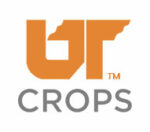LINKS
Sweep Net Sampling
The standard sweep net used in insect sampling has an opening of 15 inches in diameter and is about three feet in length. The following directions should improve the consistency and accuracy of your sweep net samples.
Sweep Net Sampling
- The net should be held in front of the sampler and angled downward at about 45 degrees (this angle will vary depending upon the height of the vegetation).
- Swing the net from side to side in about a 120-180 degree arc, and take one stroke per step as you walk through the field or down the row. Tilt the net opening so the lower edge of the rim is slightly ahead of the upper rim.
- The net should be swung briskly enough that some plant debris (leaves, etc.) are dislodged into the net.
- Space successive strokes by 2-3 feet so they do not overlap.
- In taller vegetation, sweep only deeply enough to keep the top edge of the sweep net opening even with the top of the plants.
- Each swing of the net through the canopy is a sweep. The same sweeping motion should be made regardless of row spacing, and the normal path of the net should be continued through any adjacent rows. For rows greater than 36 inches wide, one path should not pass through adjacent rows.
Taking a Sample
Many treatment thresholds are expressed in numbers of insects per 25 or 100 sweeps. It is generally recommended to make a minimum of 100 sweeps in a field (e.g., four subsamples of 25 sweeps), but this number may vary depending on the size of the field and other factors. It is not usually advisable to make more than 25 sweeps in a single subsample, and subsamples should be distributed in representative areas of a field.
The Efficiency of a Sweep Net
Different weather conditions may affect the number of insects in the field. Wet vegetation can make swinging a sweep net cumbersome and ineffective. Some insects may be more or less active at certain times of the day. Plant height and different styles of sweeping will also influence results. In cotton, the sweep net is easier to use and more effective prior to boll development when plants are smaller. After this time, drop cloth or visual sampling methods are generally preferred.
Keep in mind that the sweep net is not intended for sampling all kinds of insects. When used correctly and for the insects intended, the sweep net can give a quick and reliable indication of some pest and beneficial insect populations in a field.







